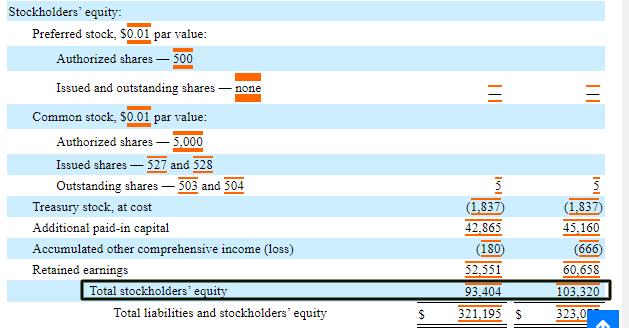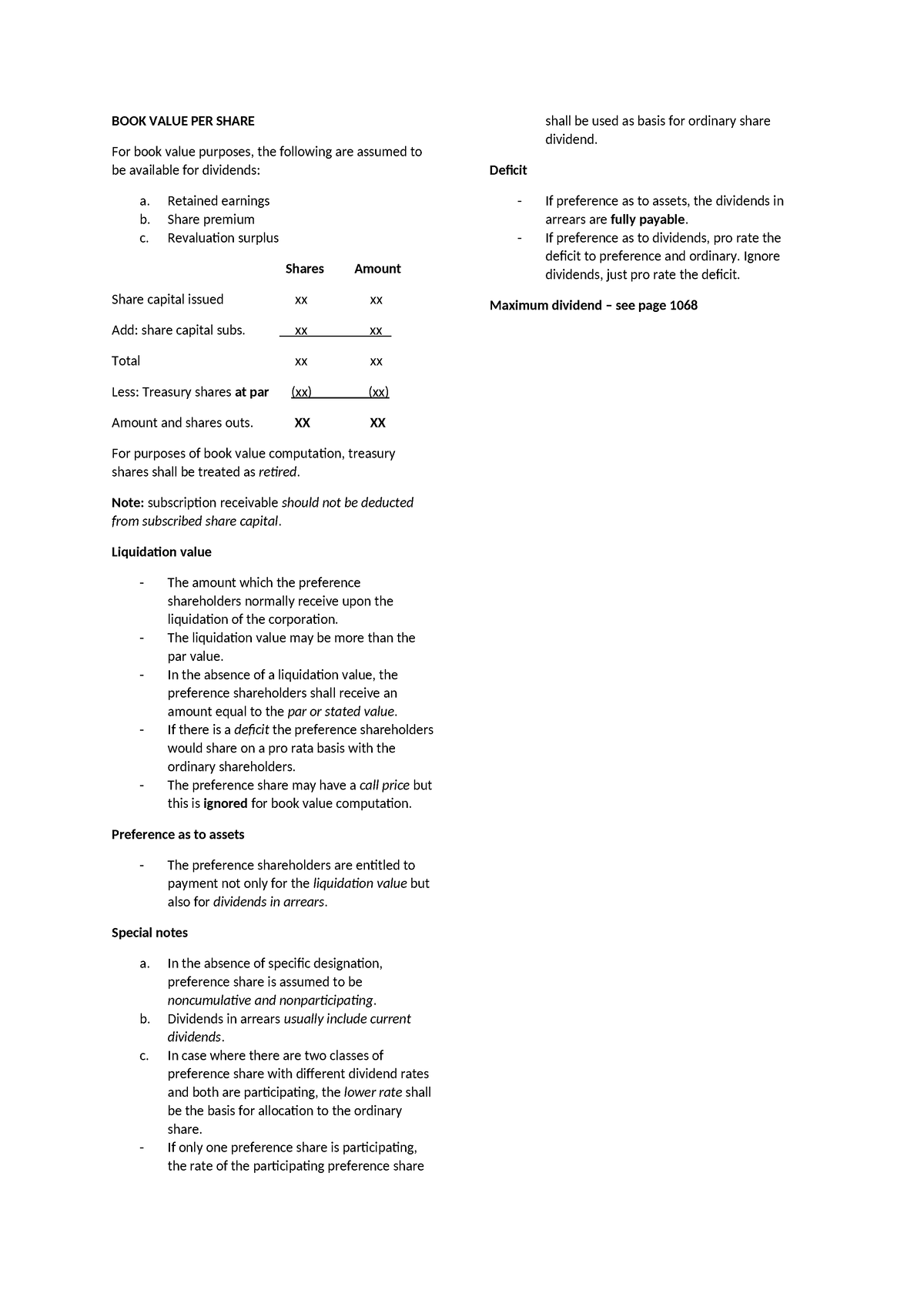
More detailed definitions can be found in accounting textbooks or from an accounting professional. Market value is what similar businesses or assets are selling for and can be influenced by many external factors such as supply and demand, and what people are willing to pay. This is because it takes into account factors such as future growth potential and market demand for the company’s products or services. Depreciation is recorded as an expense on the income statement and reduces the value of the fixed asset on the balance sheet. Finite intangible assets are amortized over their useful life, while indefinite intangible assets are tested for impairment annually. A company’s capital structure is the way it finances its operations through a combination of equity and debt.
How confident are you in your long term financial plan?
If there is no preferred stock, then simply use the figure for total shareholder equity. In accounting, market values and prices are used to determine the fair value of assets and liabilities. Fair value accounting requires that assets and liabilities be reported at their fair value, which is determined based on market values and prices.
New share issues and dilution
A business should detail all of the information you need to calculate book value on its balance sheet. The book value of your business is also known as equity, which is on the small business balance sheet. Shaun Conrad is a Certified Public Accountant and CPA exam expert with a passion for teaching. After almost a decade of experience in public accounting, he created MyAccountingCourse.com to help people learn accounting & finance, pass the CPA exam, and start their career. Whether you’re looking to purchase a business or just want to get a detailed insight into your own company, it’s vital that you pay close attention to its actual value.
What Is Carrying Value?

In the case of a business, book value is usually calculated as part of a sale, investment decision or liquidation of the business. The book value is what the business’s shareholders would theoretically get if the company was liquidated. And if the book value is compared with the market value of the company it can indicate if the business is under- or overpriced, which the power of collaboration with the xero ecosystem is of interest to buyers or investors. The discounted cash flow analysis method is used to determine the value of an asset based on its future cash flows. This method is used when the future cash flows of an asset are expected to be significant. Understanding accounting values is crucial for anyone who wants to make informed decisions based on financial information.
- The figure of 1.25 indicates that the market has priced shares at a premium to the book value of a share.
- Book value in this definition is determined as the net asset value of a company calculated as total assets minus intangible assets and liabilities.
- They are the underlying concepts that ensure financial information is accurate, relevant, and reliable.
- To measure the value of an entity’s resources, accounting values use metrics such as cost, market value, and fair value.
Book value is a simple and accurate financial metric that helps various people determine a company’s value. It also is a great help in the stock market to ascertain whether a company’s stock is overpriced or to help to spot undervalued stock. An asset’s book value is the carrying value of that asset on the company’s balance sheet. Carrying value is the asset’s original cost less any accumulated depreciation or amortization.
Property and Real Estate
The balance between assets and liabilities is reflected in the balance sheet, which is a financial statement that shows the financial position of an organization at a given point in time. The purpose of accounting values is to provide a consistent framework for financial reporting. This framework ensures that financial information is consistent across companies, industries, and countries. It also ensures that financial information is comparable over time, allowing businesses to track their financial performance. You could certainly calculate the book value of a personal asset, like a car.
In reality, carrying value does not always reflect what shareholders will receive in the event of liquidation. If the market price for a share is higher than the BVPS, then the stock may be seen as overvalued. Adam Hayes, Ph.D., CFA, is a financial writer with 15+ years Wall Street experience as a derivatives trader.
You can also determine the book value per share by dividing the number of common shares outstanding into total stockholders’ equity. For example, if the shareholders’ equity section of the balance sheet contained a total of $1,000,000 and there were 200,000 shares outstanding, then the book value per share would be $5. This liquidation value can be lower than the book value, especially, when the firm is sold off on short notice, when there are fewer bidders. You need to know how aggressively a company has been depreciating its assets.
Accumulated depreciation is the aggregate depreciation recorded against that asset during its lifetime. One such modern finance theory is fundamental investing, which involves analyzing a company’s financial statements to determine its intrinsic value and investing accordingly. The book value method is used to determine the value of an asset based on its recorded value on the company’s balance sheet. For example, when stocks are sold by an investor, capital gains are determined based on the selling price minus the book value.

